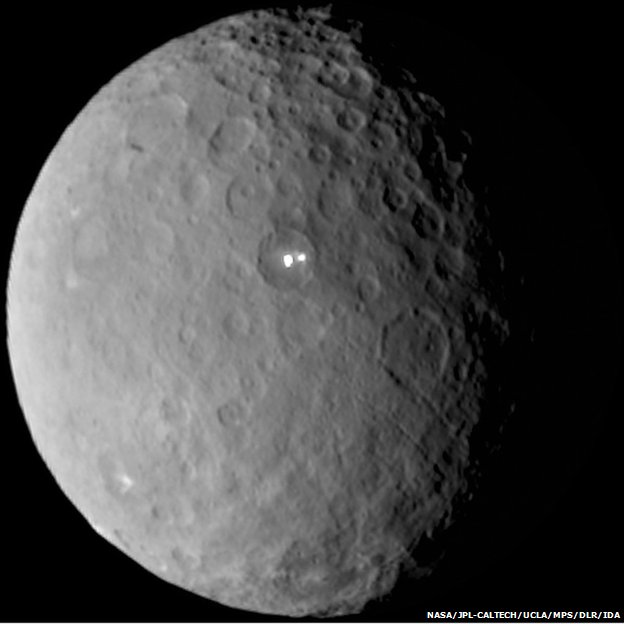There’s a mystery out there. Ceres is a dwarf planet between Mars and Jupiter, the biggest object in the asteroid belt at 950km in diameter. Two bright spots have appeared in a 92km-wide crater on its surface.
The US space agency’s Dawn probe is bearing down on the dwarf planet and on Friday will be captured by its gravity.
That will allow the satellite to spiral down in altitude in the coming months, to take ever sharper images of the spots, which sit inside a wide crater.
The striking features could be where an impact has dug out surface deposits and exposed the dwarf’s interior layers.
But deputy project scientist Dr Carol Raymond cautioned that the resolution of Dawn’s imagery was not good enough at the moment to make any definitive statements.
“These spots were extremely surprising and they have been puzzling to everyone who has seen them,” the Nasa Jet Propulsion Laboratory researcher told reporters.
“They show up in a 92km-wide crater that’s about 19 degrees North latitude. The spot in the centre is about twice as bright as the spot on the side of the crater, and as yet it has not been resolved, meaning it is smaller than the 4km pixel size [of the images].
So how did Ceres and asteroid Vesta, which Dawn spent 2011 and 2012 studying, get to be dwarf planets?
“Both Vesta and Ceres were on their way to becoming planets, but their development was interrupted by the gravity of Jupiter,” said Carol Raymond, deputy project scientist at JPL. “These two bodies are like fossils from the dawn of the solar system, and they shed light on its origins.”
I freakin’ love space. There is so much we don’t know.
